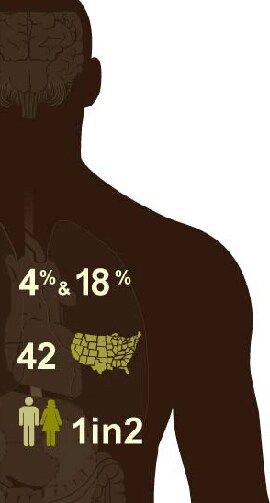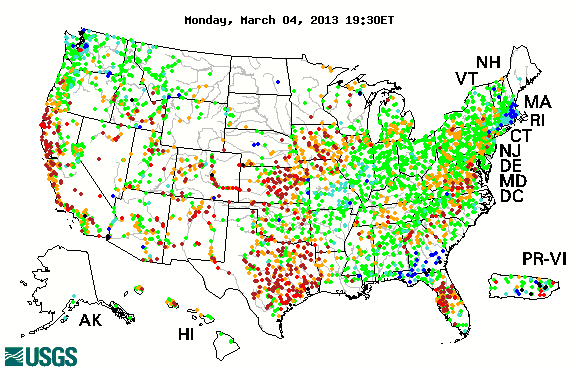Welcome to DU!
The truly grassroots left-of-center political community where regular people, not algorithms, drive the discussions and set the standards.
Join the community:
Create a free account
Support DU (and get rid of ads!):
Become a Star Member
Latest Breaking News
General Discussion
The DU Lounge
All Forums
Issue Forums
Culture Forums
Alliance Forums
Region Forums
Support Forums
Help & Search
littlemissmartypants
littlemissmartypants's Journal
littlemissmartypants's Journal
March 31, 2013

http://www.yesmagazine.org/issues/sustainable-happiness/10-things-science-says-will-make-you#1
Love, Peace and Shelter.
lmsp
INTERACTIVE GRAPHIC: Ten Things Science Says Will Make You Happy...

http://www.yesmagazine.org/issues/sustainable-happiness/10-things-science-says-will-make-you#1
Love, Peace and Shelter.
lmsp
March 29, 2013
Happy Easter.
Love, Peace and Shelter.
lmsp
The Power of Words
Happy Easter.
Love, Peace and Shelter.
lmsp
The trick is in what one emphasizes. We either make ourselves miserable, or we make ourselves happy. The amount of work is the same. (Carlos Castaneda)
March 11, 2013

Love, Peace and Shelter. lmsp
29-Ways-to-Stay-Creative
http://www.behance.net/gallery/29-Ways-to-Stay-Creative-Infographic/4504625
Love, Peace and Shelter. lmsp
March 7, 2013
Nightly Business Report - Wednesday March 6, 2013
March 7, 2013
Centers for Disease Control and Prevention
1600 Clifton Rd
Atlanta, GA 30333
800-CDC-INFO
(800-232-4636)
TTY: (888) 232-6348
Contact CDC-INFO


http://vitals.nbcnews.com/_news/2013/03/05/17195353-more-bad-news-about-nightmare-bacteria-cdc-says?lite
http://www.examiner.com/article/cre-an-antibiotic-resistant-menace
http://ohsonline.com/articles/2013/03/06/cdc-warns-cre-infections-more-common.aspx

http://www.cdc.gov/hai/organisms/cre/cre-toolkit/index.html
~~~~~~~~~~~~~~~~~~~~~~~~~~~~~~~~~~~~~~~~~~~~~~~~~~~~~~~~~~~~~~~~~~~~~~~~~~~~~~~
Love, Peace and Shelter. lmsp
CRE microbes... ST acute care (4%) and LT Care, Nursing Homes, Rehab. Ctrs... 18%... 50% fatal in
42 states in the last ten years...Centers for Disease Control and Prevention
1600 Clifton Rd
Atlanta, GA 30333
800-CDC-INFO
(800-232-4636)
TTY: (888) 232-6348
Contact CDC-INFO


http://vitals.nbcnews.com/_news/2013/03/05/17195353-more-bad-news-about-nightmare-bacteria-cdc-says?lite
http://www.examiner.com/article/cre-an-antibiotic-resistant-menace
http://ohsonline.com/articles/2013/03/06/cdc-warns-cre-infections-more-common.aspx
Drug-resistant germs called carbapenem-resistant Enterobacteriaceae, or CRE, have become more resistant to last-resort antibiotics during the past decade, a new report in CDC's Vital Signs indicates. The bacteria are causing more hospitalized patients to get infections that can be impossible to treat.
CRE germs kill one of every two patients who get bloodstream infections from them, and they readily transfer their antibiotic resistance to other bacteria. "For example, carbapenem-resistant klebsiella can spread its drug-destroying weapons to a normal E. coli bacteria, which makes the E.coli resistant to antibiotics also. That could create a nightmare scenario since E. coli is the most common cause of urinary tract infections in healthy people, according to the agency.
Making Health Care Safer
Stop Infections from Lethal CRE Germs Now
CRE infections are spreading, and urgent action is needed to stop them.
Although CRE germs are not very common, they have increased from 1% to 4% in the past decade. One type of CRE has increased from 2% to 10%.
CRE are more common in some US regions, such as the Northeast, but 42 states report having had at least one patient test positive for one type of CRE.
About 18% of long-term acute care hospitals and about 4% of short-stay hospitals in the US had at least one CRE infection during the first half of 2012.
CRE's ability to spread themselves and their resistance raises the concern that potentially untreatable infections could appear in otherwise healthy people.
CRE infections can be prevented.
Medical facilities in several states have reduced CRE infection rates by following CDC's prevention guidelines (see box).
Israel decreased CRE infection rates in all 27 of its hospitals by more than 70% in one year with a coordinated prevention program.
The US is at a critical time in which CRE infections could be controlled if addressed in a rapid, coordinated, and consistent effort by doctors, nurses, lab staff, medical facility leadership, health departments/states, policy makers, and the federal government.

http://www.cdc.gov/hai/organisms/cre/cre-toolkit/index.html
~~~~~~~~~~~~~~~~~~~~~~~~~~~~~~~~~~~~~~~~~~~~~~~~~~~~~~~~~~~~~~~~~~~~~~~~~~~~~~~
Love, Peace and Shelter. lmsp
March 6, 2013
Love, Peace and Shelter. lmsp
All Wars Are Bankers' Wars
&list=UU2MvXVBURUwTAd30AHyN6Cg&index=1Love, Peace and Shelter. lmsp
March 6, 2013
http://nc.water.usgs.gov/projects/shalegas/
http://nc.water.usgs.gov/projects/shalegas/overview.html

http://nc.water.usgs.gov/projects/shalegas/news.html

http://water.usgs.gov/
http://waterwatch.usgs.gov/?id=ww_past
Streamflow Map

*http://www.pdhsc.com/egypt_coal_mine.htm
http://freepages.history.rootsweb.ancestry.com/~pfwilson/historical_timeline.html
http://www.learnnc.org/lp/editions/nchist-newcentury/6008
http://www.lib.unc.edu/ncc/ref/nchistory/may2005/index.html
http://www3.gendisasters.com/north-carolina/19732/cumnock-nc-coal-mine-explosion-may-1900
Shale AND Water
http://www.geology.enr.state.nc.us/Mineral%20resources/Mineral_Resources.htmlPetroleum and natural gas - Approximately 125 exploratory oil and gas wells have been drilled in North Carolina since the first one was drilled in 1925. Most have been in the outer Coastal Plain. Traces of oil and gas have been detected in a few of these wells but no producing wells have been developed.
Several areas in North Carolina are considered to have potential to produce oil and gas. The main area is the outer Coastal Plain. It contains a relatively thick pile of sedimentary rocks including some excellent trap or reservoir rocks, but source rocks may not be present.
Seismic surveys in the Blue Ridge suggest that sedimentary rocks are deep beneath the crystalline rocks. These sediments may be similar to oil- and gas-bearing sediments in the Valley and Ridge Province. Detailed studies have not been conducted to verify the seismic surveys.
The Triassic basins have received attention from oil and gas exploration companies during recent years. Excellent source rocks are present, but the sandstones are not permeable. Fine-grained material fills pore spaces between the sand grains, preventing the migration of hydrocarbons. The Cumnock and Gulf coal beds* have been studies for possible in-situ methane gas generation.
Mobil Oil Corporation proposed to drill for natural gas of the Atlantic shelf off the North Carolina coast.
http://nc.water.usgs.gov/projects/shalegas/
http://nc.water.usgs.gov/projects/shalegas/overview.html

http://nc.water.usgs.gov/projects/shalegas/news.html

Introduction
Simpson well. Photo by Jeff Reid, North Carolina Geological Survey
The U.S. Geological Survey (USGS) North Carolina Water Science Center is conducting an inventory of well records and baseline groundwater-quality sampling to better delineate areas of groundwater use and groundwater-quality characteristics prior to potential shale gas exploration in the Triassic Basins of Lee and Chatham Counties, North Carolina (fig. 1). Shale Gas exploration has become economically viable in many areas of the United States (http://www.eia.doe.gov/oil_gas/rpd/shaleusa2.pdf) as a result of improved directional drilling capabilities and hydraulic fracturing ("fracking"techniques. The compilation of baseline groundwater-quality data in North Carolina is an opportunity for comparison to data collected after drilling activities commence should the State allow Shale Gas exploration to occur.
In June 2011, the North Carolina Legislature passed House Bill 242 directing the North Carolina Department of Environment and Natural Resources (NC DENR) to study issues related to potential Shale Gas Exploration in the Triassic Basins of the State (http://www.ncleg.net/sessions/2011/bills/house/pdf/h242v2.pdf).
Project Summary
Problem
Drilling processes and waste disposal practices related to shale gas exploration in the United States and other parts of the world has sometimes led to contamination of groundwater resources. Interest in the Triassic Basin shale deposits in North Carolina has grown in recent years as more than 9,000 acres have been leased within the Sanford sub-basin (fig. 1) study area in parts of Lee and Chatham counties. Baseline/reconnaissance groundwater-quality samples will be collected from private, community, and non-community transient wells in the Sanford sub-basin study area ahead of shale gas exploration in the State. These data may be used for comparison to post-drilling/hydraulic fracturing groundwater-quality data from this area should any effects from the drilling process become a concern at a later time.
Publications
Related References
http://nc.water.usgs.gov/projects/shalegas/pubs.html
http://water.usgs.gov/
http://waterwatch.usgs.gov/?id=ww_past
WaterWatch (http://waterwatch.usgs.gov) is a U.S. Geological Survey (USGS) World Wide Web site that displays maps, graphs, and tables describing real-time, recent, and past streamflow conditions for the United States. The real-time information generally is updated on an hourly basis. WaterWatch provides streamgage-based maps that show the location of more than 3,000 long-term (30 years or more) USGS streamgages; use colors to represent streamflow conditions compared to historical streamflow; feature a point-and-click interface allowing users to retrieve graphs of stream stage (water elevation) and flow; and highlight locations where extreme hydrologic events, such as floods and droughts, are occurring.
Streamflow Map

*http://www.pdhsc.com/egypt_coal_mine.htm
http://freepages.history.rootsweb.ancestry.com/~pfwilson/historical_timeline.html
http://www.learnnc.org/lp/editions/nchist-newcentury/6008
http://www.lib.unc.edu/ncc/ref/nchistory/may2005/index.html
http://www3.gendisasters.com/north-carolina/19732/cumnock-nc-coal-mine-explosion-may-1900
Profile Information
Gender: Do not displayMember since: Tue Aug 28, 2012, 07:58 PM
Number of posts: 22,632



